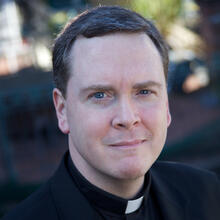In the summer of 1997 or thereabouts, while I was studying contemporary British politics at the University of Oxford, I had the occasion to undertake a private tour of the Palace of Westminster, home of the Parliament of the United Kingdom, the bejeweled neo-Gothic extravagance that, along with its clock tower and Big Ben, has become a nearly universal symbol of all things British.
The building is a triumph of Victorian engineering that took more than three decades to complete, most of those years devoted to completing its sumptuous interior, especially the rooms of the upper house. The floorplan of the building resembles that of a cathedral laid on its side. A long, straight corridor, resembling a nave, intersected by a central lobby approximately where the bay of a cathedral would be, connects the House of Commons to the House of Lords. The long walk from the lower to the upper house culminates visually in the canopied throne at the west end of the House of Lords’s chamber, the most richly decorated piece of furniture in the building and situated roughly where the high altar would be located in a cathedral.
On first impression, especially to this American mind, it all felt like a beautiful but idolatrous folly, a daring yet disturbing display of some strange British shintoism—until I stood before the throne and gazed down that long corridor. From her position there, the monarch can see all the way down to the House of Commons and into its chamber, where the speaker of the House of Commons sits in the mirror position to that of the monarch. At the annual state opening of Parliament, the queen looks down that corridor and then summons the House of Commons, led by its speaker, to the House of Lords, where she then officially opens a new parliamentary session.
This building was not constructed merely to house the chambers and offices of Parliament but to enact a liturgy, a secular pageant.
As I saw what the Queen sees on that day, the building made more and better sense. For this building was not constructed merely to house the chambers and offices of Parliament but to enact a liturgy, a secular pageant, specifically the state opening of Parliament. Like a cathedral, Westminster was built for one occasion, for one purpose. When members of Parliament progress from the House of Commons to the House of Lords, it is more than a long walk; it is a procession through the symbols of hundreds of years of political history. The “liturgical” feel, then, is not an accident, but neither is it irreverent, for the architecture and design are not proposing a new religion or alternative deity. Rather, they reflect a pre-existing reality, specifically, a Christian imagination.
And that brings me to Augustus Pugin, the man who helped design the Palace of Westminster. He is usually credited with designing only its interiors, but his contribution was far greater. While Charles Barry is said to be the building’s principal architect, most scholars now believe that Pugin was the man primarily responsible for both inside and outside. But Barry got the credit because Pugin was a Catholic; and like all Catholics in early 19th-century Britain, he was barred from much of public life. So Barry was kind enough to allow Pugin’s designs to be submitted in Barry’s name.
Eve Tushnet observes in this issue of America that “to the extent that our cities are built for autonomous individuals, they are built against friendship. If we are to renew the city’s possibilities as a haven for friendship...we will need to look more deeply at who we are, what helps us flourish.” Augustus Pugin thought much the same way, and so in the heart of the British capital he enshrined his version of Britain’s national story, so the country and its politicians would not forget “who we are, what helps us flourish.”
“In pure architecture the smallest detail should have a meaning or serve a purpose,” Pugin wrote a friend shortly before his untimely death at the age of 40. In other words, public design, art, architecture—these things count for a great deal, for they express (or fail to express) that intuitive sense of the good, the true and the beautiful that must form the basis of a lasting community.
Perhaps the politicians in London have forgotten that lesson. The Palace of Westminster is crumbling after decades of neglect. Relocating Parliament and renovating Barry and Pugin’s work will cost billions of dollars and take more than a decade to complete. The politicians don’t want to spend the money because of deficits accrued during the pandemic lockdown. Yet the more important question is whether Britain still has the imagination needed to aspire to great and beautiful things, as it did when Pugin first went to work building a new parliamentary palace amid the charred ruins of the old.
As with hearts, so too with nations: A lack of imagination is the most dangerous deficit of all.







